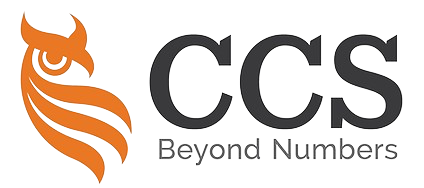In today’s fast-paced and cutthroat labour market, businesses must have an in-depth comprehension of their roles and needs.
Where should we locate employees so that we may make the maximum use of their experience and expertise?
How can it be determined whether or not the organisation need new employees?
How can we get rid of employment that isn’t necessary?
How can reasonable standards for measuring performance be established?
How do we discover the open positions and plan to fill them?

The analysis of jobs is what comes into play at this point.
A precise and in-depth job analysis is the only way to accomplish this.
Job analysis is a systematic procedure that allows companies to acquire insight into the nature of a job.
With this knowledge, companies are better able to create accurate job descriptions and efficient training programmes, as well as maintain a work environment that is both safe and productive.
What are the benefits of job analysis?
The benefits of job analysis include:
- Accurate job descriptions and specifications
- Effective recruitment and selection processes
- Improved performance management
- Enhanced training and development programs
- Better job design and organisational structure
- Fair and competitive compensation systems
In this article, we will discuss the concept of job analysis, its significance, and the procedure that must be followed to carry it out.
Table of Contents

- Introduction to Job Analysis
- Purpose and Benefits of Job Analysis
- Methods of Job Analysis
- The Job Analysis Process
- Job Description vs Job Analysis vs Job Specification vs Job Design
- Frequently Asked Questions (FAQs)
- Conclusion
Introduction to Job Analysis
Job Analysis is a systematic and comprehensive process of studying and evaluating job positions to obtain detailed information and characteristics of the jobs.

It involves collecting, analysing, and interpreting data and information related to specific job roles, including responsibilities, tasks, skills, knowledge, experience, work environment, ability, and qualification requirements. Organisations can gain valuable insights into their employees’ roles and the competencies needed to excel in them by conducting a job analysis.
Hence, Job Analysis is an important component of human resource management and organisational management, providing guidance and support in personnel recruitment, selection, training, performance evaluation, compensation management, and career planning.
Purpose and Benefits of Job Analysis
Job analysis serves several important purposes within an organisation.
The purpose of Job Analysis can be summarised as follows:

- Job description: Job descriptions describe a particular job’s duties, responsibilities, working conditions and activities.
- Job specification: Job specification details the knowledge, skills, and abilities relevant to a job, including the education, experience, specialised training, personal traits, and manual dexterity required
- Compensation and Classification: Job Analysis establishes appropriate compensation, job classification, and succession planning based on the documented job requirements.
- Career Development: Job Analysis provides individuals with a clear understanding of job requirements and expectations, aiding their career development.
- Right Fit: By accurately documenting job requirements, organisations can ensure they hire the right individuals for specific roles, creating effective job descriptions and tailored employee development plans.
- Job evaluation: The data collected during a job analysis can be utilised in the organisation’s job evaluation process, which assesses the value of a specific job to the company.
- Performance Evaluation: Job Analysis helps assess employee performance by defining performance standards and evaluating individual output.
- Determining Training and Development Needs: Job Analysis assesses training and development needs by identifying the gap between expected and actual output, guiding the design and implementation of training programs.
In summary, Job Analysis serves the purpose of aligning jobs with individuals, assessing performance, determining compensation and benefits, designing effective job roles, and enhancing organisational productivity.
Methods of Job Analysis
Several methods are available to conduct a job analysis, and the choice of method depends on the desired outcomes, industry, work environment, and job specifics.
Most Common Methods of Job Analysis:
1. Observation Method:

This method involves an outside analyst observing an employee and their tasks.
The analyst shadows the employee for several days, attends meetings, and evaluates their workload to understand the essential functions of the role.
However, despite being perceived as one of the simplest approaches to analysing a specific job, it is, in reality, the most challenging. Why is that? Let’s explore.
The difficulty arises from the fact that individuals have their own unique perspectives and ways of perceiving things. People think differently and may interpret the gathered information in various ways.
Consequently, the process may be influenced by personal biases, preferences, and subjective judgments, leading to potentially unpredictable outcomes. To mitigate this issue, it is essential to provide proper training to the job analyst or whoever is conducting the job analysis process.
This particular method encompasses three techniques:
- Direct Observation,
- Work Methods Analysis, and
- Critical Incident Technique.
The first technique involves observing and documenting an employee’s behaviour in different situations.
The second involves studying time and motion and is specially used for assembly lines or factory workers.
The third technique involves identifying critical incidents representing successful and unsuccessful job performance and analysing the key behaviours and skills required.
2. Interviews Method:

Conduct structured interviews with employees, supervisors, and subject matter experts to gather information about the job.
The analyst questions an employee about their role in this method.
The goal is to learn about the job’s aspects, such as systems used, processes followed, and application of skills to achieve results.
And to avoid errors, it is always good to interview different employees in the same role to gain a holistic view of the responsibilities. Then it can be generalised and used for the whole group.
3. Questionnaires Method:
We administer questionnaires or surveys to job incumbents and supervisors to collect data about job tasks, responsibilities, and required qualifications.

Special attention should be given to formulating questions tailored to employees of varying job grades.
To obtain accurate job-related information, it is crucial for management to effectively convey to staff that the data collected will benefit them.
It is essential to reassure employees that the information will not be used against them in any manner. Please do so properly to save time, money, and human resources.
These methods give organisations valuable insights into job roles and responsibilities, helping them optimise processes, define realistic expectations, and enhance workforce performance and development.
4. Critical Incidents Technique:
This method collects examples of effective and ineffective job performance from supervisors and job incumbents. These incidents are then analysed to identify key job dimensions and performance criteria.
The Job Analysis Process
The job analysis process typically begins with the analyst gathering information about the duties, nature of work, and basic qualifications of the job incumbent.
The goal is to develop a good task list encompassing the position’s functional areas, related tasks, and training recommendations. To ensure accuracy, subject matter experts and supervisors validate this final list.
Here is a comprehensive breakdown of the job analysis process:

1. Determining the Purpose of Job Analysis:
Any process becomes meaningless if its purpose is not identified and clearly defined.
Hence, the initial step in the job analysis process is to ascertain its necessity and the desired outcomes. Investing human effort, energy, and financial resources is only possible if HR managers understand the reasons for collecting data and how it will be utilised.
Recognise that similar roles may have different outcomes based on the varying responsibilities across departments. Determine the specific results and deliverables expected for each position. For instance, different technical writing roles in different departments may require distinct skill sets and levels of expertise.
2. Determining who will conduct the Job Analysis:

The subsequent crucial step in the job analysis process is determining who will conduct it.
Some companies entrust their HR department with this task, while others hire job analysis consultants.
Job analysis consultants can be invaluable as they provide impartial advice, guidelines, and methodologies. They don’t have any personal biases or preferences when analysing a job.
3. Determining how to conduct the Job Analysis:
The next step involves determining the methodology for conducting the job analysis process. A well-planned approach is necessary to investigate a specific job thoroughly.
4. Strategic Decision-Making:
At this stage, strategic decisions need to be made.
This includes determining the level of employee involvement in the process, the extent of data collection and documentation, the sources from which data will be gathered, the methods employed for data collection, the processing and analysis of information, and the categorisation of collected data.
5. Training the Job Analyst:
The next step involves training the job analyst on effectively conducting the job analysis process and utilising the selected methods for collecting and recording job-related data.
6. Preparing for the Job Analysis Process:

This step includes internal communication within the organisation to ensure employees understand the purpose and significance of the job analysis.
HR managers need to effectively communicate the process to gain the support and cooperation of employees.
It also involves preparing necessary documents, questionnaires, interview protocols, and feedback forms.
7. Collecting Data:
This step gathers job-related information, including employees’ educational qualifications, required skills and competencies, working conditions, job activities, reporting structure, desired personal traits, duties, responsibilities, and employee behaviour.
8. Documenting, Verifying, and Reviewing:
The collected data is documented systematically to ensure its accuracy and authenticity.
The information is then verified to confirm its reliability. A thorough data review is conducted to ensure its completeness and relevance, leading to an accurate representation of the specific job. 9. Developing Job Description and Specification:

This step involves organising and categorising the collected data to create valuable information.
The job description outlines the roles, activities, duties, and responsibilities associated with the job.
On the other hand, the job specification describes the required educational qualifications, experience, personal traits, and skills needed to perform the job effectively.
10. Define Compensation and Any Applicable Benefits:
Consider compensation and benefits as a crucial aspect of job analysis.
Evaluate the qualifications, responsibilities, and activities of similar positions in your industry.
Determine the appropriate salary range by researching industry standards and competitor offerings.
Look for job descriptions of comparable roles on platforms like LinkedIn or Indeed. You can also explore websites such as JobStreet and Salary.com to understand the job scope and industry standards better.

By following these steps, you can understand the duties and responsibilities associated with a specific job.
But we must also understand that job analysis is not a one-time process.
As the industry and organisation evolve, expectations for each position may change.
Conduct periodic job analyses to adapt to changing circumstances and ensure the job description remains accurate and up-to-date.
This helps attract candidates who fit the role and enables appropriate compensation based on industry standards.
Job Description vs Job Analysis vs Job Specification vs Job Design
Job Analysis and Job Description are two related concepts often used in human resources to understand and define the nature of a job.
Here is a comprehensive explanation of the differences between the two:
1. Job Analysis:
- Job Analysis refers to gathering information about a specific job to understand its requirements, tasks, responsibilities, skills, and working conditions.
- It involves a detailed examination and evaluation of the job to determine the necessary information regarding its nature.
- Job Analysis aims to understand the job and its various aspects comprehensively.
- The information collected through Job Analysis is used to create job descriptions and job specifications.
- Job Analysis can be conducted through interviews, questionnaires, surveys, observations, and position analysis.
- It helps in recruitment and selection processes by identifying the skills, knowledge, and qualifications required for the job.
- Other uses of Job Analysis include performance appraisal, compensation management, and job evaluation.
2. Job Description:
- A Job Description is a written document that provides a detailed summary of a job’s contents systematically.
- It is based on the information gathered through Job Analysis.
- A Job Description includes information about the job title, job summary, duties and responsibilities, required skills and qualifications, working conditions, reporting authority, salary range, and performance standards.
- A Job Description aims to communicate the essential job facts and requirements to potential candidates and employees.
- It helps eliminate unfit applicants and sets standards for selecting the appropriate candidate during recruitment.
- They serve as a reference for employees to understand their roles and responsibilities and guide their performance.
3. Job Specification

Job Analysis is a fundamental method for gathering job-related information, creating two key data sets: job description and job specification.
These two data sets are crucial for filling any job vacancy.
An accurate definition of these sets is necessary to ensure the appropriate match between individuals and positions.
This clarity facilitates a shared understanding between employers and employees regarding the expected deliverables and how to achieve them.
Articulating them clearly and precisely enables organisations and employees to navigate various challenges during the onboarding process effectively.
4. Job Design:

Job design involves structuring and organising tasks, responsibilities, and relationships to enhance efficiency, productivity, and employee satisfaction.
It involves determining the content and structure of jobs, including the allocation of tasks, the level of autonomy, the skill variety required, and the feedback and support mechanisms in place.
The objectives of job design are as follows:
- Work efficiency and productivity: Job design aims to improve efficiency and productivity by optimising work processes, task allocation, and work methods. This can be achieved by reducing redundant and ineffective tasks, increasing job autonomy and empowerment, and improving work methods and workflows.
- Employee satisfaction and engagement: Job design creates meaningful, challenging, and development opportunities to enhance employee satisfaction and engagement. This can be achieved through job enrichment, job enlargement, job rotation, teamwork, and other approaches allowing employees to utilise their skills and potential fully.
- Achievement of organisational goals: Job design is closely linked to the organisation’s strategy and objectives. By ensuring that job roles align with the organisation’s goals and providing the necessary skills and resources, job design contributes to long-term organisational success. It ensures that job roles are aligned with the organisation’s strategic direction and promotes employee understanding and commitment to organisational goals.

In summary, job analysis is gathering information about a job, which is then used to create a job description and specification.
The job description outlines the tasks and responsibilities, while the job specification details the qualifications and attributes required of the individual performing the job.
On the other hand, job design involves structuring and organising the job elements to enhance productivity and employee satisfaction.
Frequently Asked Questions (FAQs)

How is job analysis different from job evaluation?
Job analysis collects information about a job’s duties, responsibilities, and requirements.
In contrast, job evaluation assesses the relative value or worth of jobs within an organisation to establish a fair and equitable pay structure.
Who is responsible for conducting job analysis?
HR professionals, industrial-organisational psychologists, and job analysts are typically responsible for job analysis.
They collaborate with managers, supervisors, and employees to gather relevant job-related information.
How often should job analysis be conducted?
Job analysis should be performed periodically or when there are significant changes in job roles or organisational structures.
It ensures that job descriptions and requirements are up to date and aligned with current business needs.
How can job analysis help in the recruitment process?
Job analysis provides the foundation for developing job advertisements, identifying the required qualifications, skills, and competencies for candidates, and designing effective selection criteria and assessment methods.
Can job analysis help in performance management?
Yes, job analysis plays a crucial role in performance management.
It helps define clear job expectations, performance standards, and key performance indicators (KPIs) for evaluating employee performance and providing feedback.
How does job analysis contribute to training and development?
Job analysis helps identify the specific skills, knowledge, and competencies required. This information is valuable for designing training programs that address the identified skill gaps and development needs of employees.

These FAQs provide a general overview of job analysis and its relevance in various HR practices. For more detailed information, please refer to your HR consultant.
免责声明:
我们网站上的文章、模板和其他材料只供参考。
虽然我们努力确保所提供的信息是最新和准确的,但我们不能保证网站或其内容,包括任何相关图形的完整性、可靠性、适用性或可用性。因此,您需要承担使用这些信息所带来的风险。
如果你打算使用我们的视频和出版物的内容作为参考,我们建议你采取以下步骤:
- 核实所提供的信息是最新的、准确的和完整的。
- 寻求额外的专业意见,因为每个问题的范围和程度,可能是独特的。
Keep in touch with us so that you can receive timely updates
请与我们保持联系,以获得即时更新。
1. Website ✍️ https://www.ccs-co.com/ 2. Telegram ✍️ http://bit.ly/YourAuditor 3. Facebook ✍
- https://www.facebook.com/YourHRAdvisory/?ref=pages_you_manage
- https://www.facebook.com/YourAuditor/?ref=pages_you_manage
4. Blog ✍ https://lnkd.in/e-Pu8_G 5. Google ✍ https://lnkd.in/ehZE6mxy
6. LinkedIn ✍ https://www.linkedin.com/company/74734209/admin/






